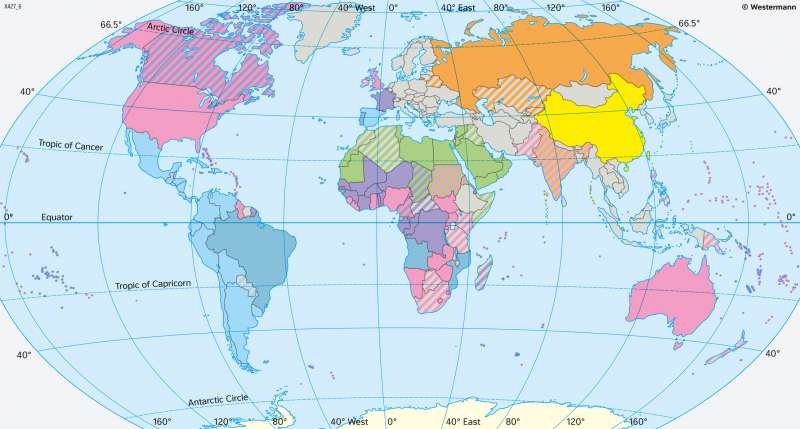The World - Official languages
Tourism
978-3-14-100890-6 | Page 42 | Ill. 2

Overview
The map shows the six official languages spoken by most people on earth. These languages are also the working languages at the United Nations. The most important official language, English, is still used in official communications not only in its mother country, but also in almost all areas formerly influenced by Great Britain.
Distribution of main languages worldwide
Particularly in Africa, the distribution of official languages still clearly shows the former colonial structures. Chinese (Mandarin) is used as an official language by around 1.2 billion people. Outside China, Chinese is only recognised as an official language in Brunei and Singapore. Spanish, which is used as an official language in Spain as well as in large parts of Central and South America and is a relic of colonial history, too. Today, Russian only serves as an official language in Russia, Kyrgyzstan, and Belarus. The remaining successor states of the Soviet Union introduced their national languages as official languages after 1991. French is the official language in France as well as in former colonies and today's overseas territories (Sub-Saharan Africa, Guyana, numerous island groups in the Caribbean and Oceania). Arabic is used as an official language in the African and Near Eastern parts of the Islamic cultural area. The greatest diversity of official languages exists in Europe. In the European Union, all laws and regulations must be translated into 24 official languages. After Bulgarian and Romanian, the latest official language to be added, is Irish (with certain restrictions). Some of these languages are also acknowledged as minority languages, e.g. Swedish in Finland or French in Italy. Website presentation and communication between the individual organs of the EU is predominantly in English, French, and German.




